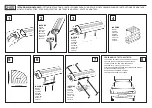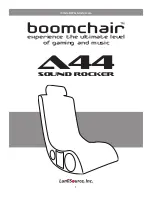
DIRRVE / DIRFE is an innovative passive infrared sensor for outdoor use, which has two completely independent and individually adjustable
detection heads. This allows obtaining a great functioning versatility and at the same time, if correctly installed, an excellent decreasing of false
alarms.
The sensor operates with the IR heads in AND mode: it generates alarm only when both IR heads detect intrusion. It is possible to select the
priority of the head which causes alarm.
The two versions are identical concerning functionality and optical settings. They differ from each other just for the alarm transmission mode:
DIRRVE
: RADIO version
DIRFE
: WIRED version
INDEX
1.
TECHNICAL .............................................................................................................................................................................................................................................. 2
2.
PRECAUTIONS ......................................................................................................................................................................................................................................... 3
3.
POWER ON THE SENSOR ......................................................................................................................................................................................................................... 3
4.
BATTERY (ONLY DIRRVE) .......................................................................................................................................................................................................................... 4
4.1.
LOW BATTERY ..................................................................................................................................................................................................................................... 4
4.2.
BATTERY REPLACEMENT ..................................................................................................................................................................................................................... 4
5.
CORRECT USE OF THE SENSOR ................................................................................................................................................................................................................ 5
6.
HEADS ORIENTATION .............................................................................................................................................................................................................................. 9
7.
AND DIREZIONALE ................................................................................................................................................................................................................................. 10
8.
LIMIT THE DETECTION APERTURE (PARTIAL LENS COVERING) ................................................................................................................................................................ 11
8.1.
LENS COVER ..................................................................................................................................................................................................................................... 11
8.2.
ADHESIVE MASK ............................................................................................................................................................................................................................... 11
9.
PULSE COUNT ....................................................................................................................................................................................................................................... 12
10.
WALL MOUNTING ............................................................................................................................................................................................................................ 13
11.
SETTINGS ......................................................................................................................................................................................................................................... 16
12.
LEARNING (ONLY DIRRVE) ............................................................................................................................................................................................................... 18
13.
SUPERVISION (ONLY DIRRVE) .......................................................................................................................................................................................................... 18
DIRRVE / DIRFE
OUTDOOR DUAL-IR SENSOR
“AND” version
[SMD] [Serie 100] [48bit] [SPV] [AN] [IP54]
Installation and use manual
15.12-M:5.0-H:x.x-F:x.x
Summary of Contents for DIRFE
Page 5: ...5 5 CORRECT USE OF THE SENSOR A B C ...
Page 19: ...19 ...
Page 20: ...20 This manual may be subject to change without notice ...


































